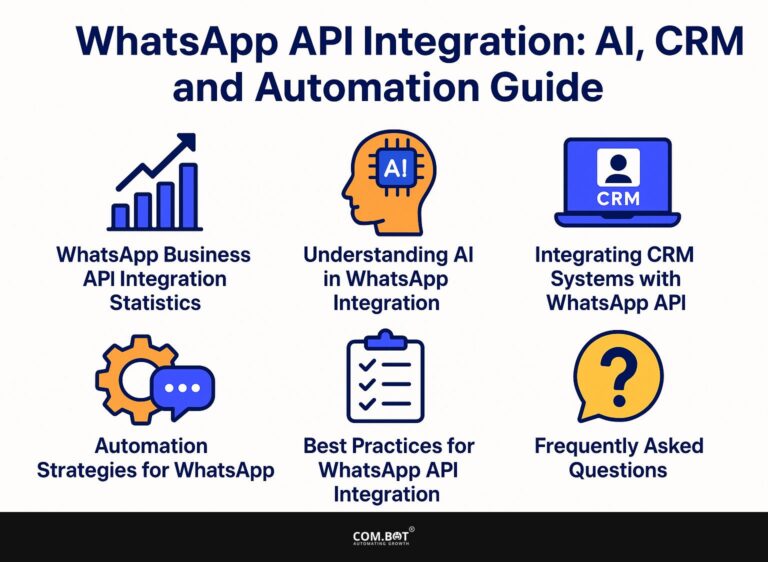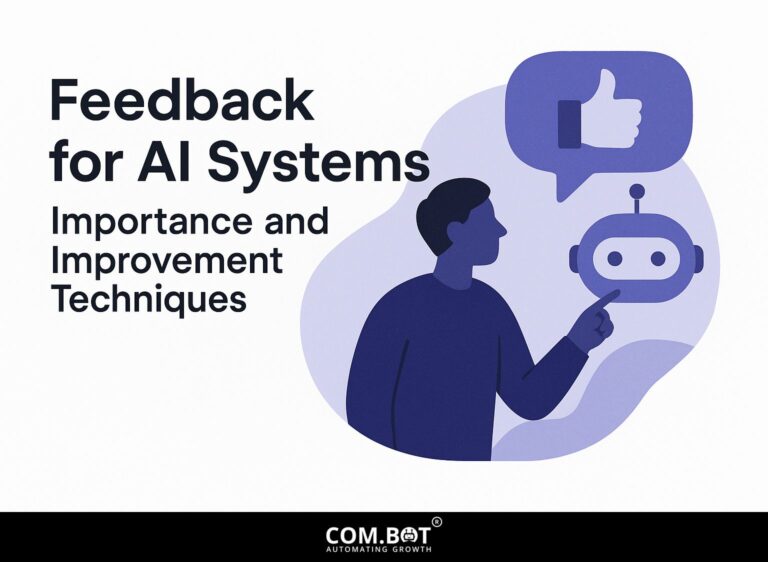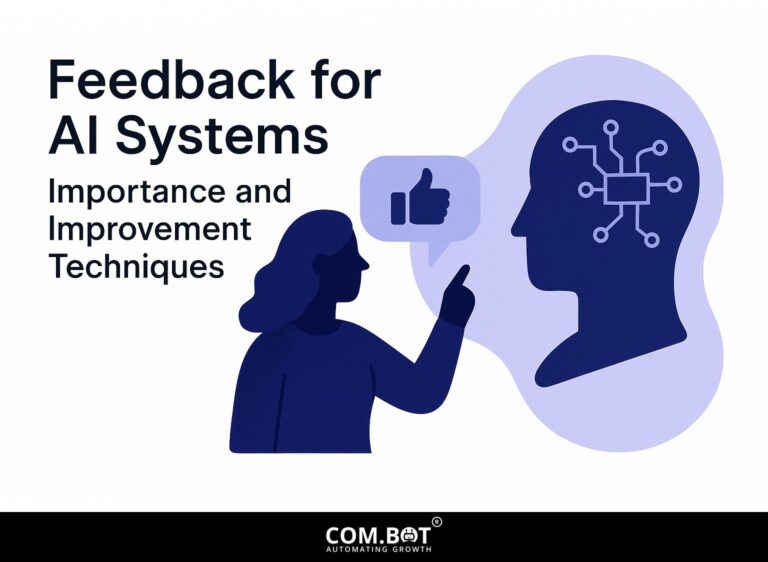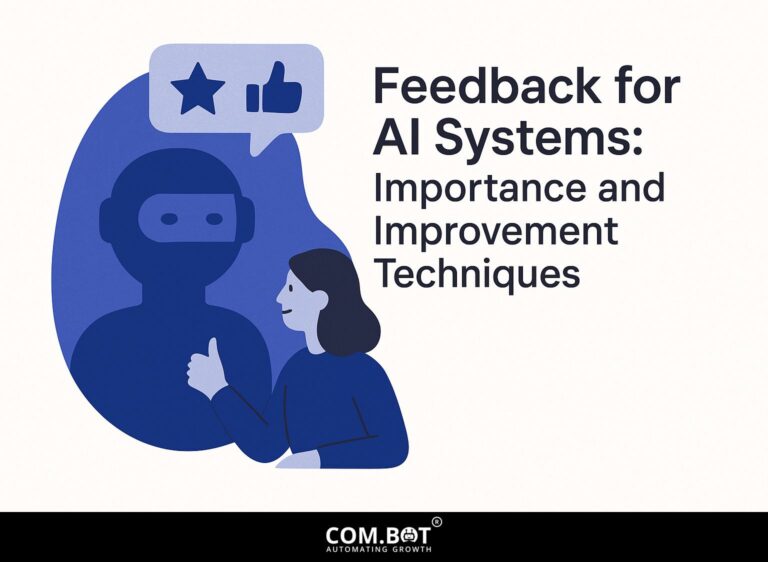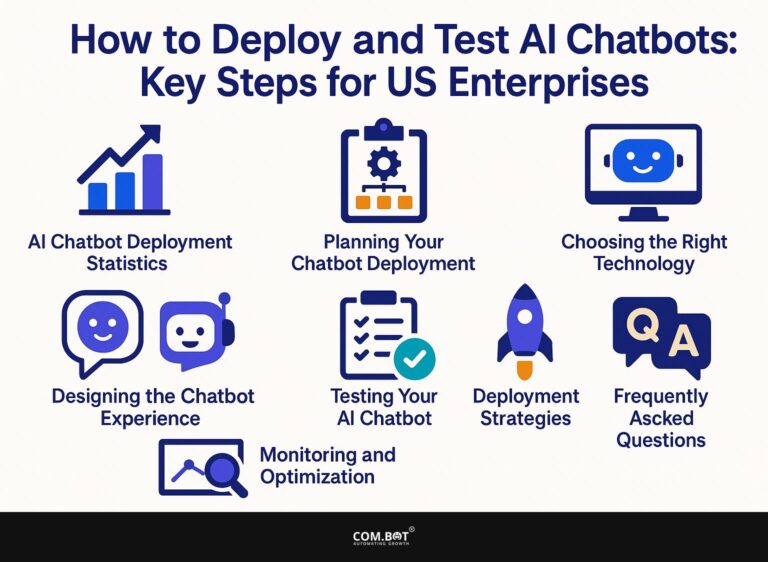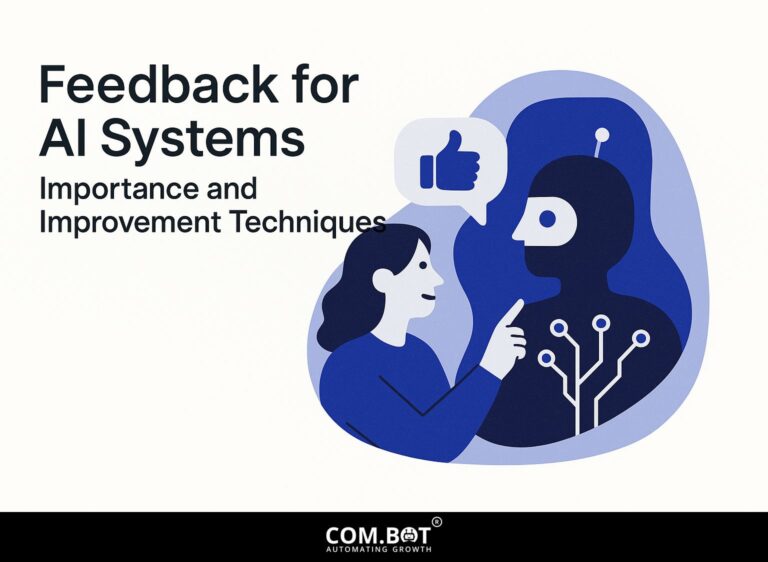Feedback for AI Systems: Importance and Improvement Techniques
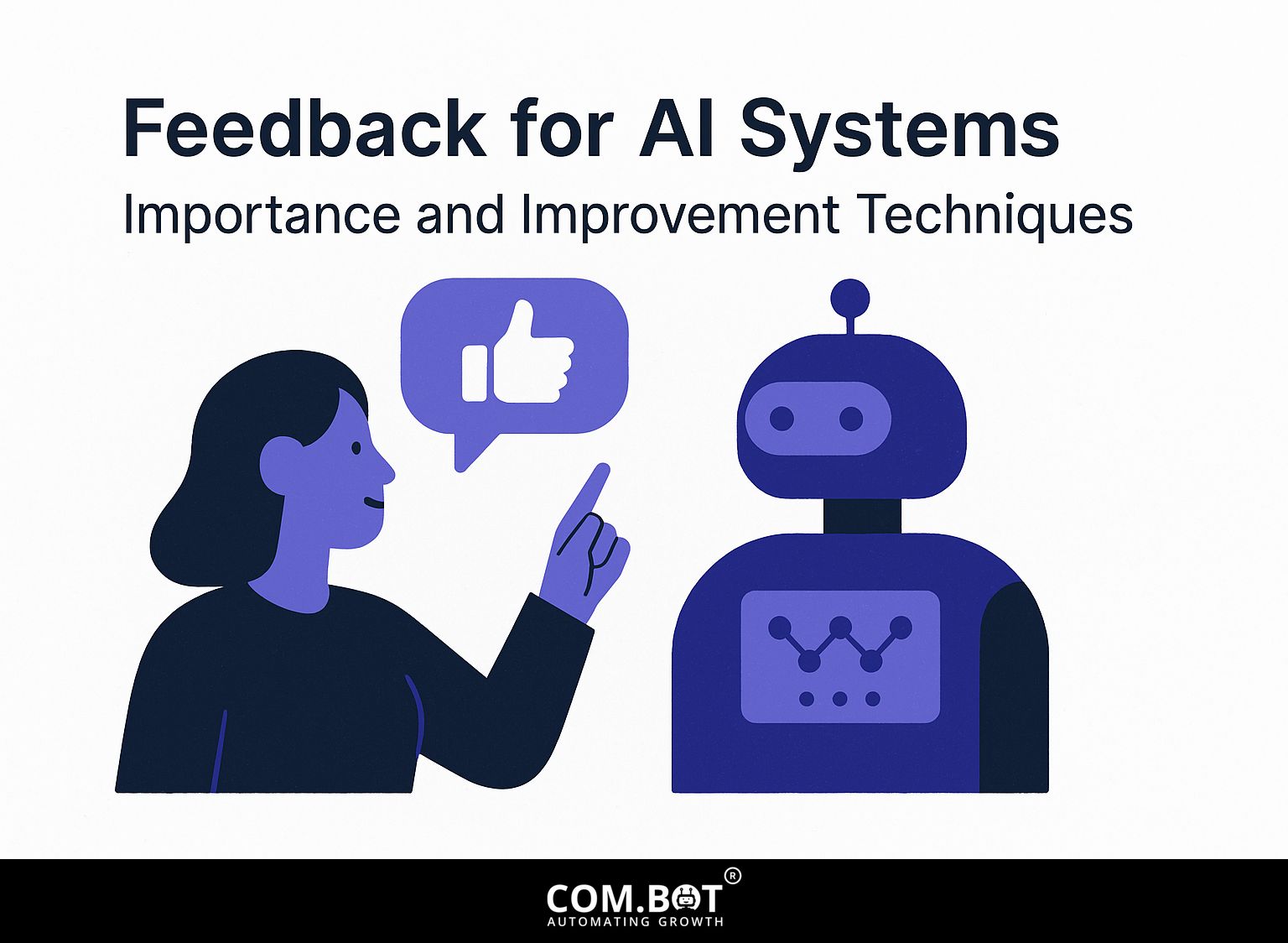
In the fast-changing field of Artificial Intelligence, the AI feedback loop is important for improving how machine learning systems work. By using feedback from people, developers can improve algorithms and increase accuracy. This article examines the importance of feedback in developing AI, looking into practical methods to improve these systems. Learn how using human knowledge can improve AI abilities and support ongoing learning for more intelligent and responsive technologies.
Key Takeaways:
- 1 Importance of Feedback in AI
- 2 Types of Feedback Mechanisms
- 3 AI Feedback Mechanisms Statistics
- 4 Improvement Techniques for AI Feedback
- 5 Challenges in Implementing Feedback
- 6 Case Studies and Applications
- 7 Future Directions
- 8 Frequently Asked Questions
- 8.1 What is the importance of feedback for AI systems?
- 8.2 Why is feedback seen as an important part in building AI systems?
- 8.3 What are some techniques for improving feedback in AI systems?
- 8.4 How does feedback help to increase the transparency of AI systems?
- 8.5 Can feedback be used to address ethical concerns in AI systems?
- 8.6 How can feedback be integrated into the design and implementation of AI systems?
Definition and Scope
Feedback in artificial intelligence offers data that helps improve the decision-making skills of AI models, which is important for boosting their accuracy and performance.
There are two primary types of feedback: supervised and unsupervised.
Supervised feedback involves labeled training data where algorithms learn from examples with known outcomes, enhancing their predictive power. On the other hand, unsupervised feedback lets models find patterns in data without labels, helping to find useful information.
Studies show that organizations with structured feedback systems can improve performance by as much as 30%. Tools like TensorFlow and PyTorch make it easier to set up and use these feedback methods.
Role of Feedback in AI Development
Feedback is essential in AI development, allowing models to learn from errors and improve using reinforcement learning methods.
These feedback systems let models adjust their settings and produce better results based on how users interact with them. Tools like OpenAI’s reinforcement learning systems apply this idea effectively.
For example, using Proximal Policy Optimization (PPO), developers can fine-tune AI behavior by simulating user feedback. This leads to faster and customized experiences.
Running A/B tests can provide important information about how different changes impact results, helping to make improvements. If you’re curious about the broader implications of these practices, you might find our detailed analysis on feedback for AI systems and their improvement techniques invaluable. By regularly using user feedback, developers can greatly improve how well their models work.
Importance of Feedback in AI
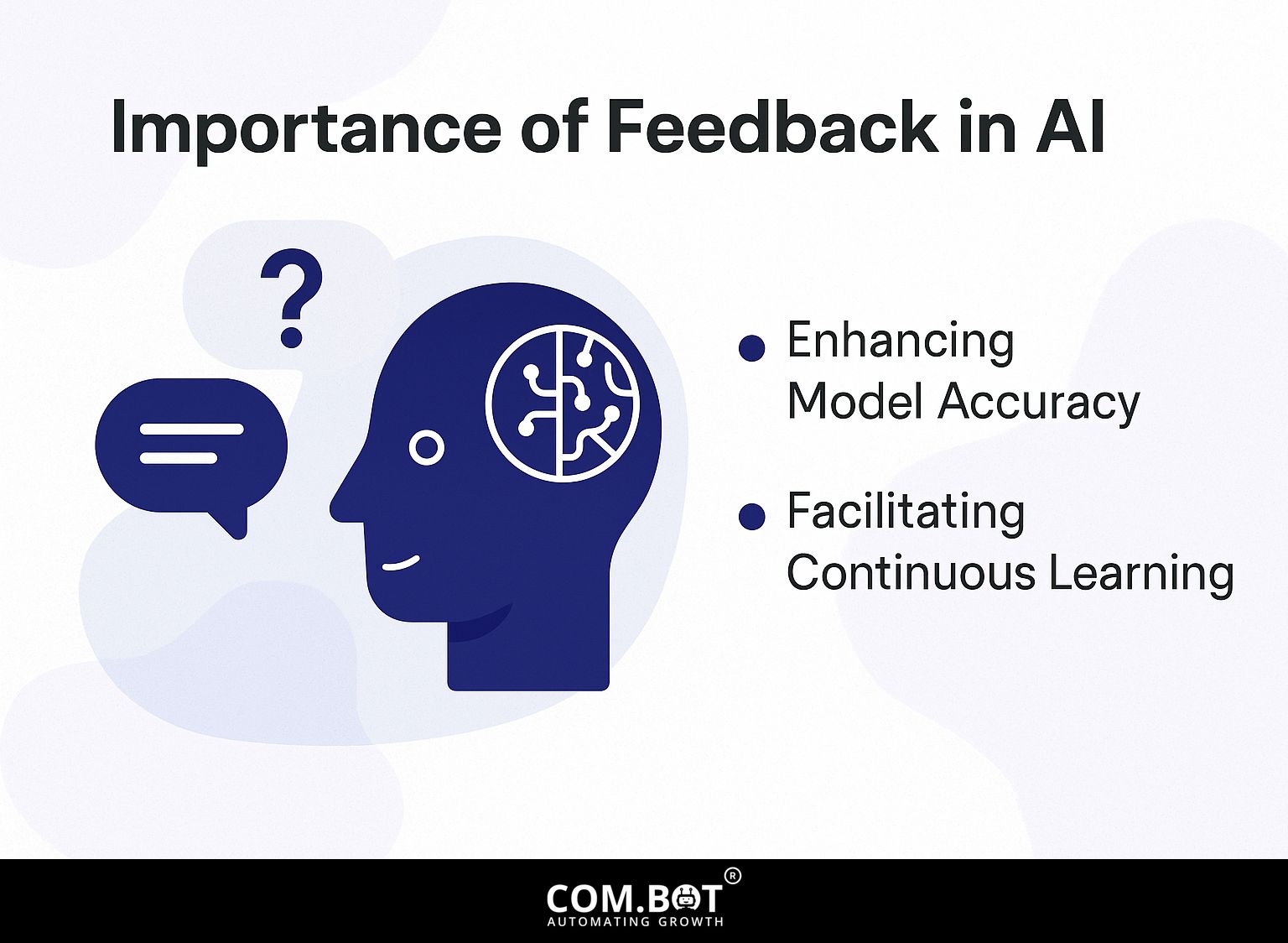
Using effective feedback methods can greatly improve model accuracy, cutting error rates by up to 25% in different uses, such as self-driving cars.
Enhancing Model Accuracy
Implementing structured feedback mechanisms can lead to significant improvements in AI model accuracy, demonstrated by a case where a predictive model’s accuracy improved from 70% to 90%.
In this project, the team collected user feedback during each stage of model rollout, using both detailed opinions and numerical performance data.
Specifically, they used tools like Google Forms for surveys and MLflow for tracking model metrics. By listening to what users said about model predictions, they gradually improved the features to better match what users actually need.
This feedback process improved accuracy and made users more confident in the AI’s results, showing how useful organized feedback is in machine learning.
Facilitating Continuous Learning
Feedback systems enable AI models to improve their predictions by learning from new data, similar to human learning.
Feedback improves processes; Label Studio allows users to quickly mark fresh data. For example, developers can use its flexible interface to add techniques that improve training datasets.
This repeated process helps models learn from practical use. Incorporating user feedback directly into updates-where users rate predictions or suggest corrections-further fine-tunes the model’s accuracy.
Regularly analyzing this feedback enables AI systems to stay relevant and effective.
Types of Feedback Mechanisms
AI systems use different ways to get feedback, each serving a specific purpose in improving performance and adjusting results to meet user requirements. One of our most insightful case studies demonstrates these techniques and their impact on system efficiency.
AI Feedback Mechanisms Statistics
AI Feedback Mechanisms Statistics
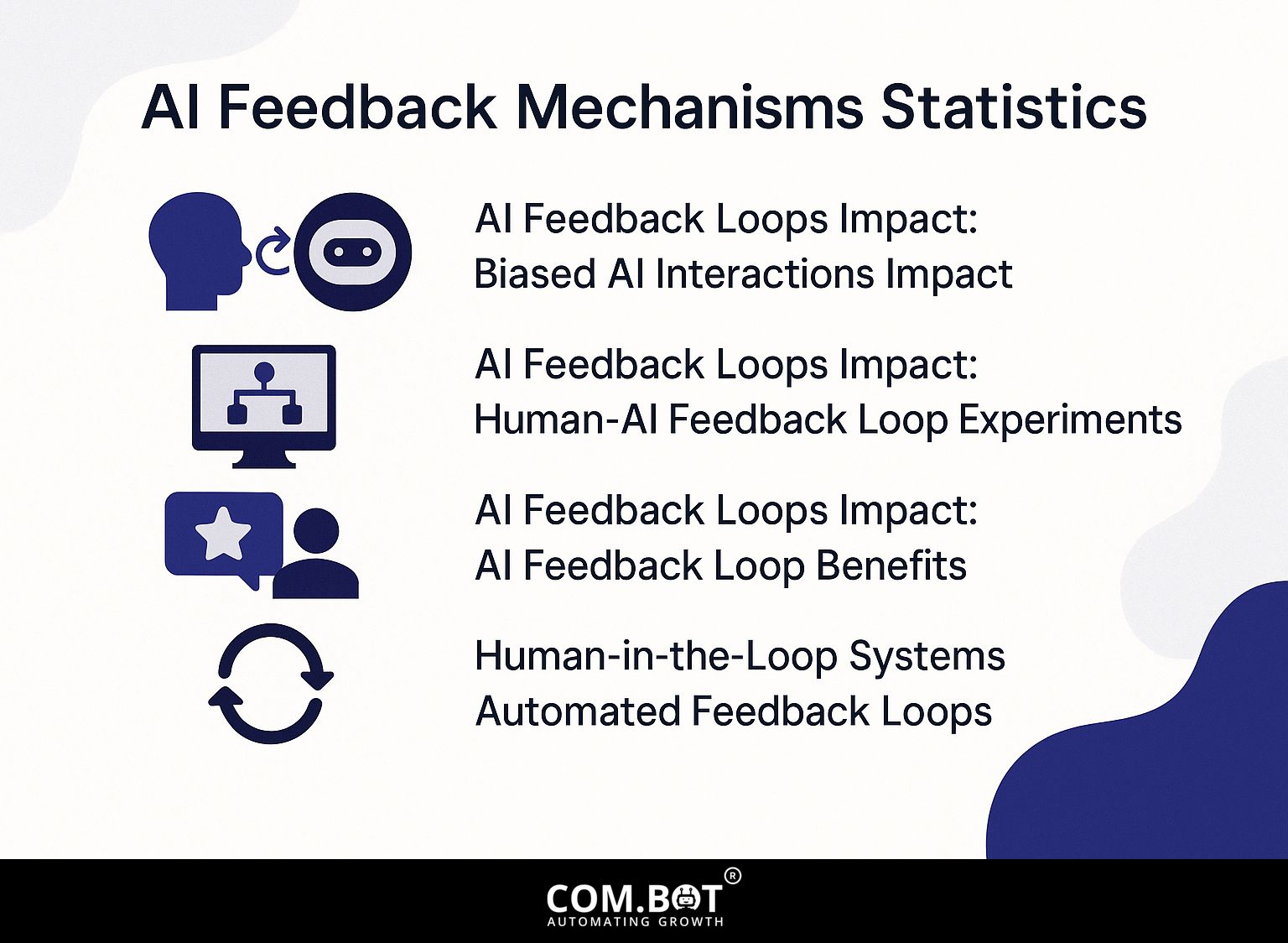
AI Feedback Loops Impact: Biased AI Interactions Impact
AI Feedback Loops Impact: Human-AI Feedback Loop Experiments
AI Feedback Loops Impact: AI Feedback Loop Benefits
The AI Feedback Mechanisms Statistics offers a thorough examination of how feedback loops in AI systems affect interactions and results. This information is important for knowing both the problems and advantages related to AI systems, especially regarding bias and how well AI feedback works.
AI Feedback Loops Impact shows important information about how AI works with people and how it affects what they do and choose.
- Biased AI Interactions Impact: A substantial 53.08% of interactions show bias amplification during human-AI interaction, indicating how existing biases in data can be exacerbated. Furthermore, a 65.33% The high number of mistakes in biased AI algorithms highlights the immediate need to remove bias from AI systems, as these mistakes can greatly affect results and user confidence.
- Human-AI Feedback Loop Experiments: Involving 1401 participants, these experiments highlight how human emotions are affected by AI interactions, with a notable 53.08% showing a tendency to make tasks seem ‘sadder.’ AI response changes affected how people reacted in 32.72% of cases, highlighting how AI actions affect how people feel and make choices.
- AI Feedback Loop Benefits: Although there are obstacles, using feedback cycles can improve AI accuracy, as shown by a 13.48% improvement in participant outcomes. Moreover, 58% People have reported positive outcomes from these loops, indicating possible benefits like improved efficiency and better AI performance when feedback systems are used correctly.
The data shows that AI feedback systems can make current biases worse, but they can also lead to big improvements if handled properly. Dealing with bias and improving feedback processes are important for improving AI’s benefits for society, making AI systems more dependable and increasing user confidence.
Human-in-the-Loop Systems
Human-in-the-loop systems involve people in the AI process, which makes decisions better and models more trustworthy.
In healthcare, this combination has shown to be extremely important. For example, a diagnostic AI system used by radiologists improved its accuracy by 20% when it was trained with feedback from people.
Radiologists can give feedback on unusual cases and errors, helping the AI improve based on real-world evaluations by experts. IBM Watson Health uses feedback systems to keep human knowledge up-to-date in their algorithms. Related insight: Feedback for AI Systems: Importance and Improvement Techniques.
Working together helps improve patient results and builds trust in AI technology for healthcare workers.
Automated Feedback Loops
Automated feedback processes use algorithms to look at performance information and make quick adjustments, improving how AI systems work without human intervention.
These loops are important in reinforcement learning, where tools like TensorFlow and PyTorch offer solid systems for creating and training models.
In practice, if a model underperforms, the feedback loop reinforces successful actions while diminishing those that fail.
For example, a self-driving car continuously uses data from sensors to change its driving based on real-time information, improving accuracy.
Like gaming AIs that change their strategies during a game, they learn and improve with each time they are played. This flexibility improves how the system works and how users interact with it.
Improvement Techniques for AI Feedback
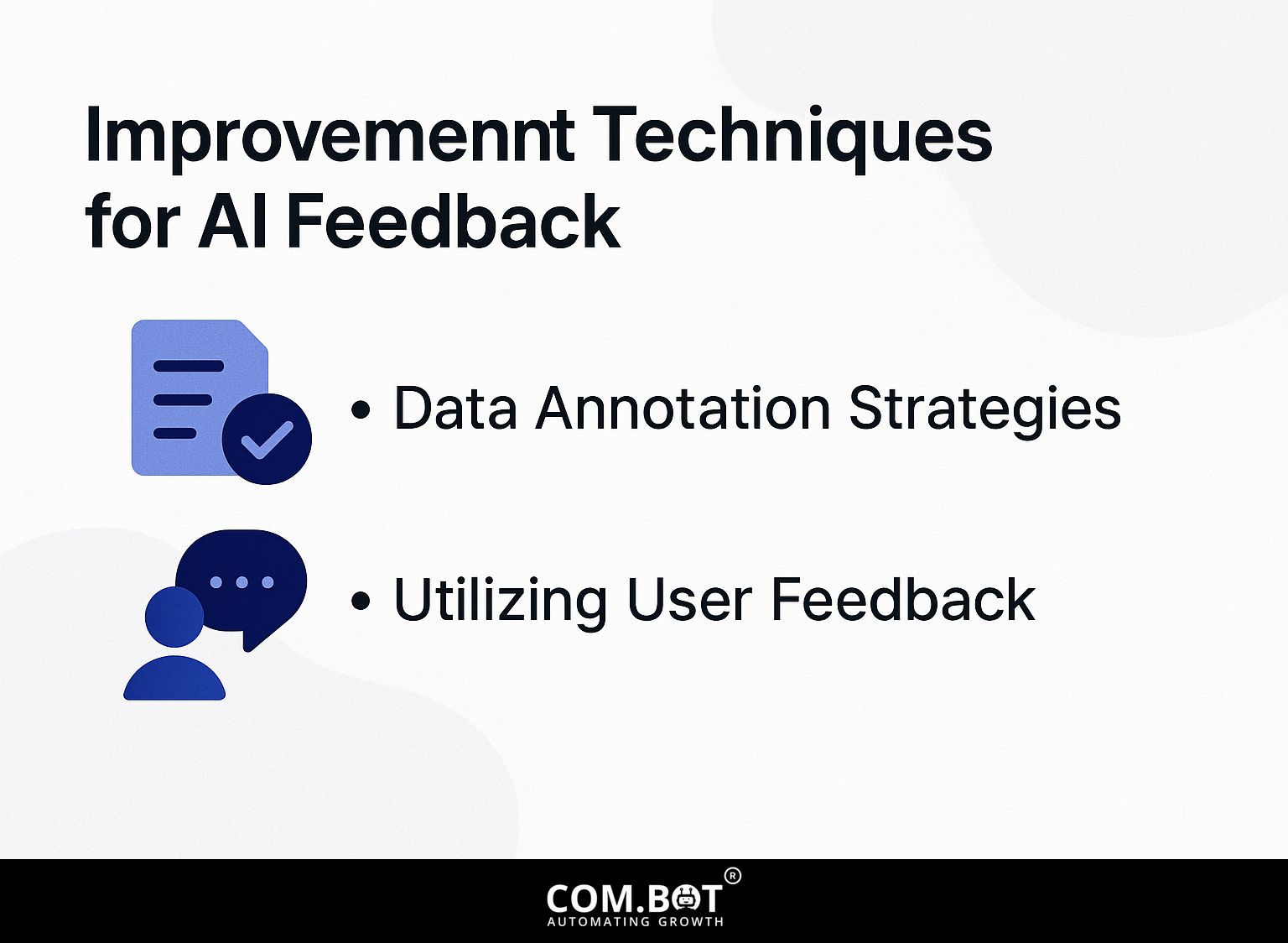
Using methods to improve AI feedback can simplify model training and improve how AI systems work.
Data Annotation Strategies
Labeling data correctly is important for creating high-quality data, which helps AI systems get correct information for accurate answers.
To achieve high-quality data annotations, start by adopting tools like Label Studio for efficient labeling and review processes.
First, clearly define your annotation guidelines to maintain consistency among annotators. Next, perform quality checks by doing regular audits. This involves checking results from different annotators to identify any discrepancies.
Provide regular training sessions to improve the skills of annotators and fulfill the requirements of new projects. By regularly using these methods, you’ll keep your dataset strong and dependable for training models.
Utilizing User Feedback
Collecting and using user feedback is important for improving AI results, helping systems match user preferences and increase satisfaction.
To gather useful user feedback, use tools like Google Forms for surveys or Hotjar for heat maps and session recordings.
A solid approach involves designing concise surveys with targeted questions, focusing on specific features of your AI system.
For example, the language learning app Duolingo frequently gathers input through user polls, allowing them to adjust teaching methods based on student preferences.
Use tools like Mixpanel to study how people use your product. This helps you find trouble spots in the user experience, allowing you to make specific changes based on real user actions.
Challenges in Implementing Feedback
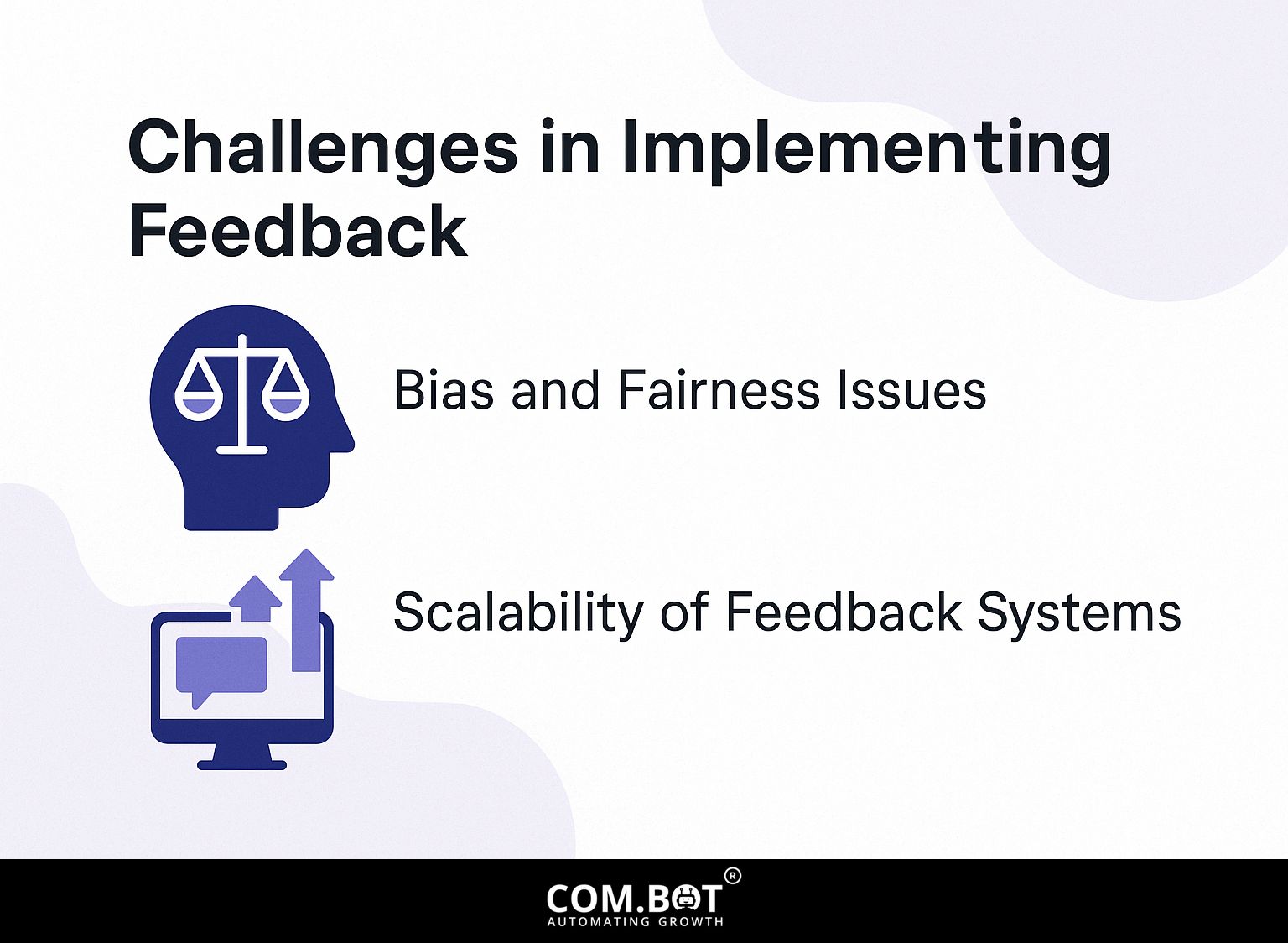
Even with the advantages, setting up good feedback systems in AI has some difficulties, like spotting bias and concerns about growth. To address these issues effectively, it’s crucial to understand the importance and improvement techniques for AI feedback, which can guide you towards more refined systems.
Bias and Fairness Issues
Problems with bias and fairness continue to be major issues in AI systems. When data is biased, it can lead to unfair results, affecting decisions.
To combat bias, organizations should implement a multi-step approach. Start by reviewing your training datasets to check for diverse representation. Tools like IBM Watson’s AI Fairness 360 can help you identify and reduce bias.
After this, regularly check the model’s results with tools like FairTest to find any biased patterns. Keeping in touch with users helps regularly check and adjust systems.
By including different viewpoints in development and frequently refreshing models, companies can lessen bias and make AI decisions fairer.
Scalability of Feedback Systems
Scalability poses a significant challenge for AI feedback systems, particularly as data volume increases and user interactions become more complex.
To solve these problems, think about using cloud services such as AWS or Google Cloud. These services can automatically adjust capacity according to demand.
Begin by using a strong data management tool like Apache Kafka or RabbitMQ to manage data flow and processing effectively.
Regularly review performance metrics to identify bottlenecks; tools like Prometheus can help monitor system health in real-time.
Using AI to automatically generate responses improves how users engage with the system. Sharing feedback with developers helps make ongoing improvements and allows the system to handle more users.
Case Studies and Applications
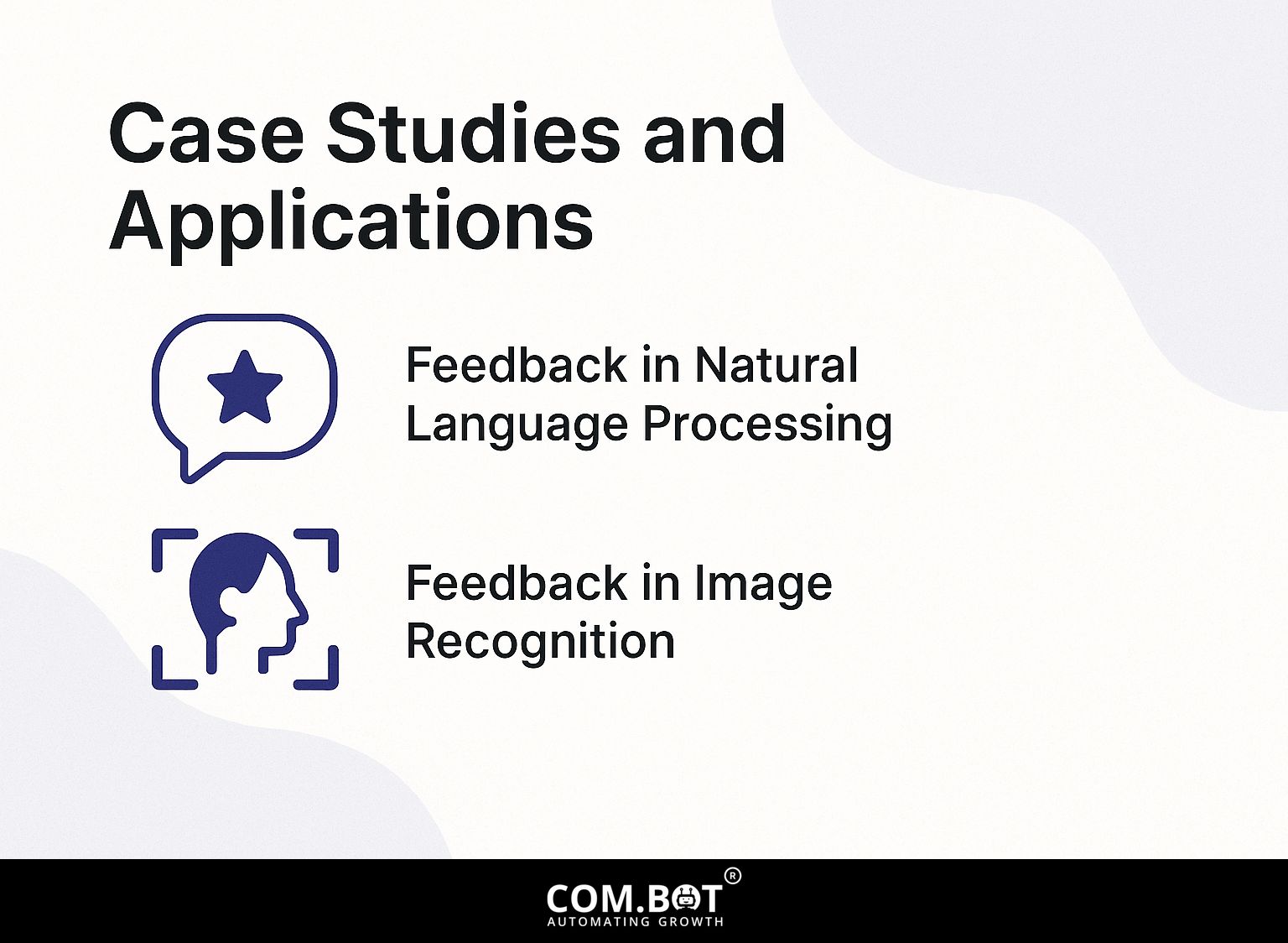
Using feedback systems in AI has practical uses in many fields, showing how they can improve how models work and make users happier.
Feedback in Natural Language Processing
In Natural Language Processing (NLP), feedback methods are important for improving language models and enhancing how they understand context.
These mechanisms include user feedback, reinforcement learning, and active learning strategies.
For instance, user feedback allows models like OpenAI’s language models to adjust responses based on user preferences and corrections.
Reinforcement learning teaches models by using rewards, improving results by focusing on correct answers.
Active learning, on the other hand, involves selecting and annotating data where the model is most uncertain, thus improving accuracy in those areas.
Using these methods creates a more engaging and user-focused way to build NLP tools, leading to better communication.
Feedback in Image Recognition
Feedback mechanisms in image recognition systems enable continuous improvement of accuracy, as shown in applications ranging from facial recognition to medical imaging.
Automatic feedback, like measuring prediction errors during model training, lets systems learn from their errors on a large scale. Human feedback, such as checking model results, offers detailed knowledge needed for difficult decisions.
For example, including user corrections in facial recognition can greatly improve accuracy, particularly across different groups of people.
Tools like TensorFlow and PyTorch simplify the process for developers by allowing them to easily organize repeated training sessions.
Using both methods improves the models and helps correct biases, leading to more dependable results in different situations.
Future Directions
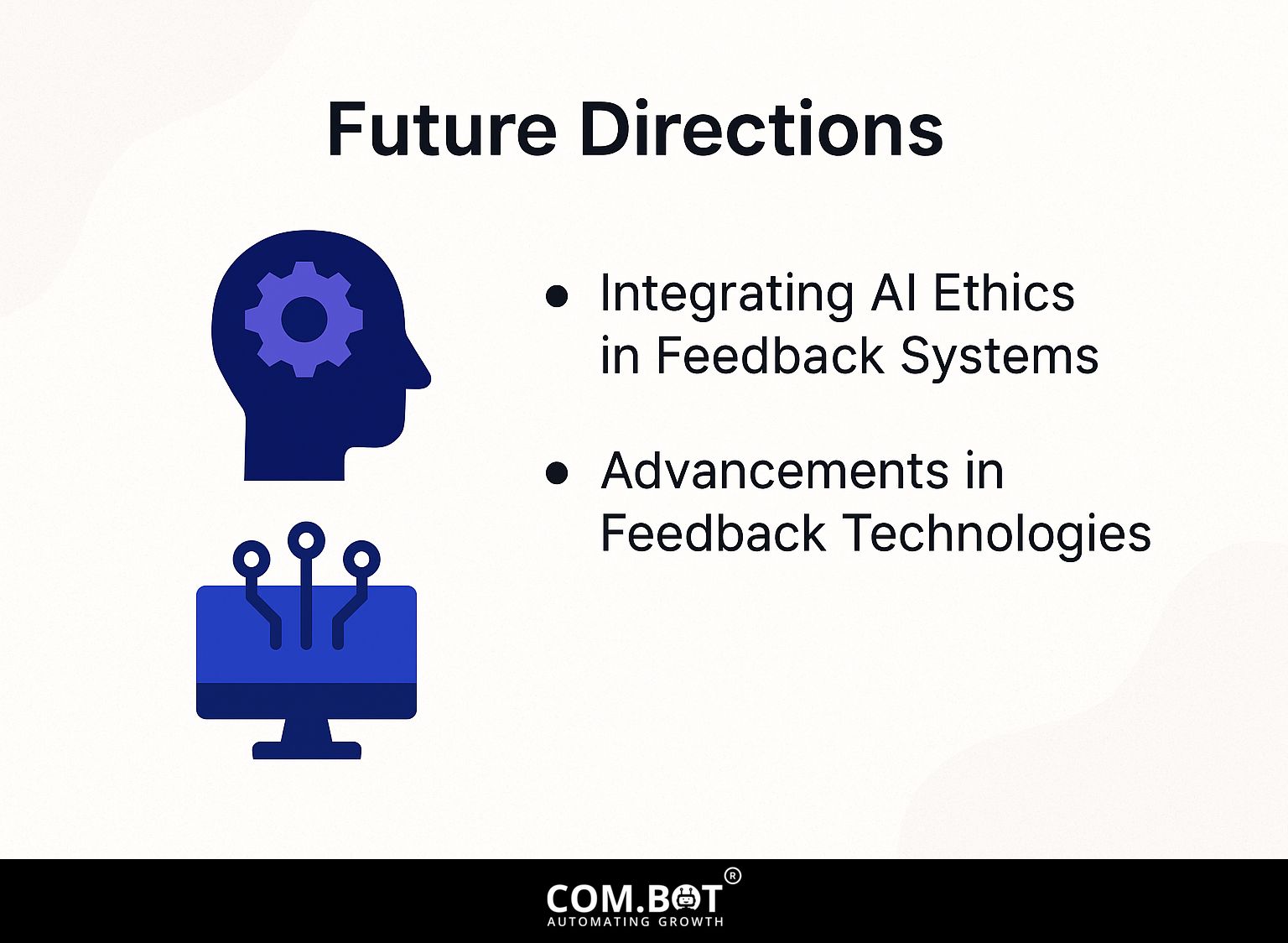
Upcoming improvements in feedback technology will focus on ethical standards and work towards building strong AI systems. For an extensive analysis of this trend, our comprehensive study on feedback techniques for AI systems explores these future directions in greater depth.
Integrating AI Ethics in Feedback Systems
Including ethical principles in AI feedback systems is needed to make sure AI decisions are fair, responsible, and clear.
Using guidelines such as Fairness, Accountability, and Transparency in Machine Learning (FAT/ML) and the AI Ethics Guidelines from the European Commission can greatly improve adherence to ethical standards.
For example, performing regular checks for bias in AI models makes sure the data used is varied and reflects different groups. Involving stakeholders in the design process makes sure different opinions are included, leading to AI systems that welcome everyone.
Tools such as IBM’s AI Fairness 360 toolkit allow developers to assess and mitigate bias in their models effectively, promoting a more ethical approach to AI development.
Advancements in Feedback Technologies
Recent progress in feedback technologies, such as instant feedback handling and improved data visualization, are changing the way AI systems learn and change.
For instance, real-time feedback allows models to adjust immediately based on user interactions, significantly enhancing learning efficiency.
Tools like TensorBoard and Matplotlib allow developers to see model performance metrics, which helps them find areas that need improvement.
Implementing A/B testing to compare different model versions also aids in refining algorithms.
By using these methods together, organizations can build a more effective and strong AI training setting, which will lead to improved performance and happier users.
Frequently Asked Questions
What is the importance of feedback for AI systems?
Feedback is essential for AI systems as it allows them to continuously learn and improve their performance. Without feedback, AI systems couldn’t adjust to new information and make correct predictions.
Why is feedback seen as an important part in building AI systems?
Feedback is important in building AI systems because it helps fix mistakes and biases. This makes sure the system makes fair and impartial decisions. It also helps to make the system’s algorithms better and increase its accuracy.
What are some techniques for improving feedback in AI systems?
Some methods to make AI systems better at giving feedback include using active learning, which means getting feedback directly from users, and adding extra data to the system to make it work better.
How does feedback help to increase the transparency of AI systems?
By giving feedback, users can explain how the AI system reaches decisions and spot any possible biases or mistakes. Being more open can help people trust AI systems and make sure they make fair and honest choices.
Can feedback be used to address ethical concerns in AI systems?
Yes, feedback can help address ethical concerns in AI systems by identifying and correcting any biases or discriminatory patterns in the data. It can also support ongoing checks and changes to the system to make sure ethical rules are followed.
How can feedback be integrated into the design and implementation of AI systems?
Feedback can be integrated into the design and implementation of AI systems by creating a feedback loop that allows for continuous learning and improvement. This can involve collecting and analyzing user feedback, as well as using techniques like reinforcement learning to improve the system’s performance based on feedback.
